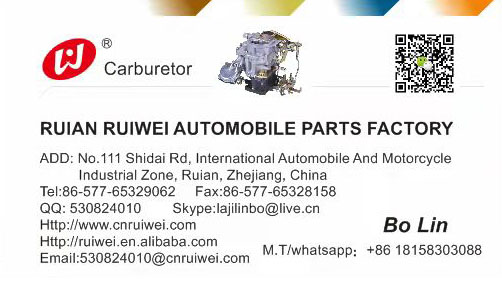Carburetor Factory | Working Principle Of Two-stroke Gasoline Engine
1. Composition of gasoline engine
Gasoline saws generally use crankcase preloaded scavenging two-stroke machines, which are all cylinder air-cooled. According to the function, the gasoline engine is composed of four systems: mechanical, electrical, fuel supply, and airflow.
1) The mechanical system includes cylinder, piston group, connecting rod, crankshaft, box, etc. The function is to achieve gas sealing, withstand gas pressure and mechanical force, and ensure a certain movement relationship.
2) The electrical system includes magneto, ignition coil, spark plug, etc. Its function is to generate electricity by the crankshaft drive magneto to complete the timely high-pressure ignition of the cylinder.
3) The fuel supply system consists of fuel tank, fuel tank switch, fuel filter, fuel pipe and carburetor. Its function is to store and provide fuel oil and lubricating oil, and to mix fuel oil and air into combustible gas in an appropriate proportion.
4) The airflow system includes air filter, intake valve, exhaust muffler, etc., which are used to provide combustion air, bring oil into the cylinder and reduce exhaust noise.
2. Basic working principle
When starting the power transmission crankshaft, the piston group is implicated by the crankshaft and the connecting rod. When the piston moves toward the top of the cylinder (upward), the crankcase generates negative pressure, and the air passes through the air filter and the fuel on the carburetor. It is sucked into the crankcase through the intake valve. When the piston moves away from the cylinder (downward), the combustible gas in the crankcase is compressed. When the scavenging port is opened, the combustible gas is pressed into the cylinder through the scavenging port, and when the piston moves upward again , the combustible gas is compressed in the cylinder, the pressure and temperature are increased, and the heated gas pressure is further increased by the ignition and combustion of the electrical appliance, the gas expands, pushes the piston downward to drive the crankshaft to rotate, and outputs power. The exhaust gas is first ejected by pressure, and then driven out of the cylinder by the scavenging air flow, and discharged out of the machine through the muffler.
When the crankshaft is idling, the clutch is disengaged, and the rotation of the crankshaft does not drive the drive shaft, which satisfies the need to stop the drive shaft without stopping. When the crankshaft speed rises above the clutch engagement speed, the clutch is engaged, the transmission shaft rotates, and the machine is driven to work.
3. Characteristics and classification of gasoline engines
The term "gasoline engine" can generally refer to various types of power machines. The energy sources for generating power are different. Power machines can be divided into electric motors, wind engines, and hydraulic engines. As an engine for mobile power, the heat engine that converts thermal energy into mechanical energy is the most common. The "heat" of the heat engine is generated by the combustion of fuel, and the combustion is carried out in the engine. This kind of engine is called an internal combustion engine. Internal combustion engines also have piston type and rotary Impeller type structure, the common internal combustion engine is a reciprocating piston type. Depending on the fuel used, the internal combustion engine can be divided into gasoline engine, diesel engine, kerosene engine, etc. The gasoline engine is an internal combustion engine that burns gasoline Carburetor Factory.




